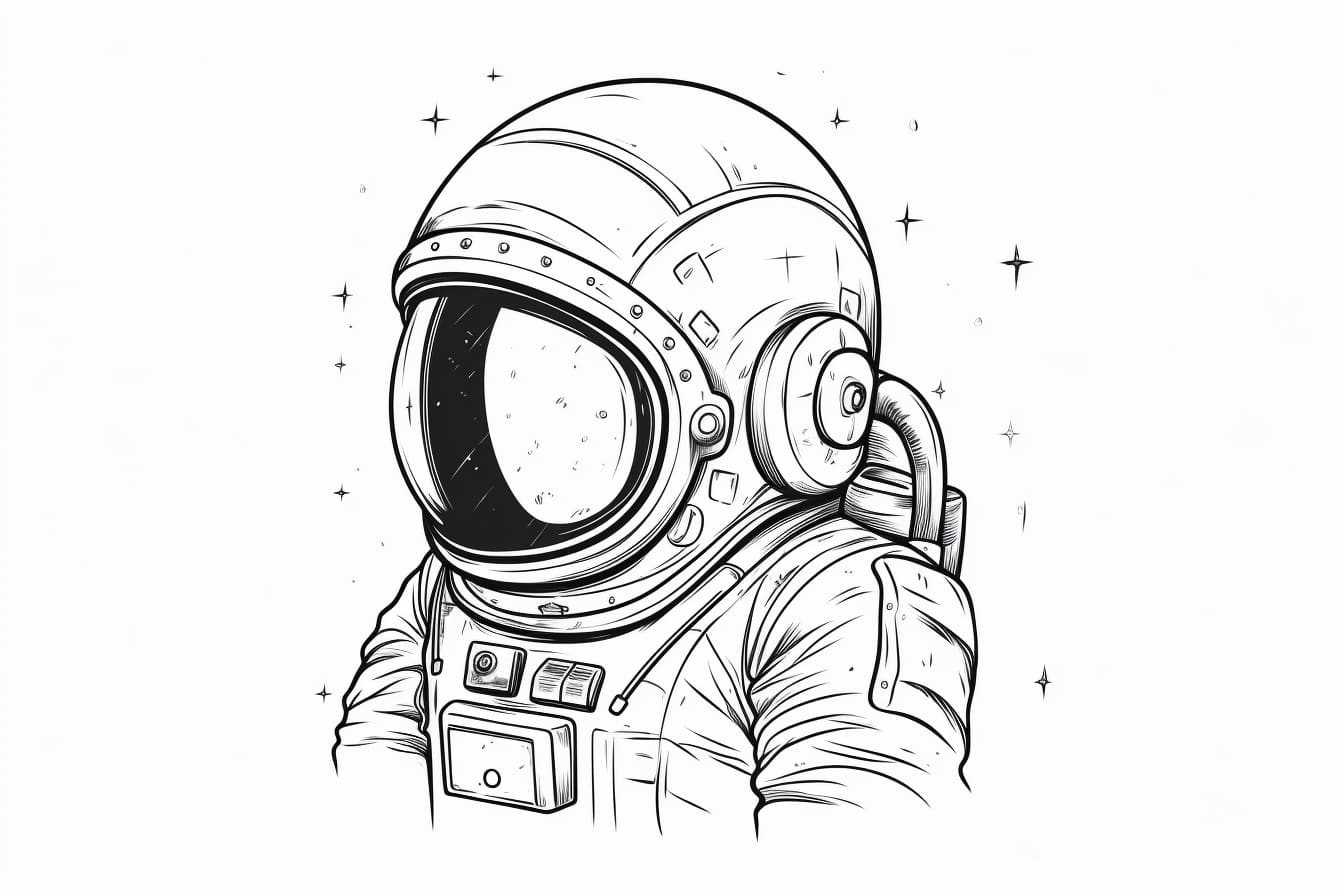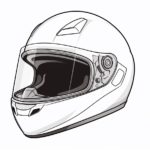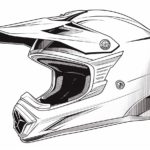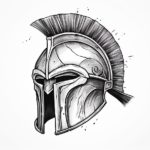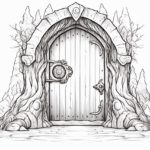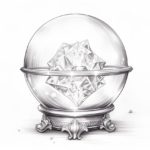Welcome to the fascinating world of drawing! Today, we are going to explore the intricate design of an astronaut helmet. The astronaut helmet is not just a piece of protective gear, but a symbol of human innovation and exploration beyond our earthly boundaries. In this session, we will delve into the details of creating a realistic and captivating representation of an astronaut helmet on paper. Get ready to sharpen your observation skills, master shading techniques, and bring to life the essence of space travel through your art. Let’s lift off into this exciting drawing journey together!
Materials Required
To draw an astronaut helmet, you will need the following materials:
- Drawing paper or sketchbook
- Pencils (different grades for sketching and shading)
- Eraser
- Ruler (for straight lines)
- Compass (for drawing circles)
- Reference images of astronaut helmets (for inspiration and accuracy)
Optional materials:
- Colored pencils or markers (if you want to add color to your drawing)
- Blending tools (such as blending stumps or tissues) for shading and blending
These materials will help you create a detailed and realistic drawing of an astronaut helmet.
How to Draw an Astronaut Helmet: a Step-by-step Guide
Step 1: Start with Basic Shapes
Begin by sketching the overall shape of the astronaut helmet using basic geometric shapes such as circles and ovals. Start with a large circle for the main part of the helmet and add an oval shape for the visor.
Step 2: Add Details
Next, add details to the helmet such as the neck ring and ventilation holes. The neck ring can be represented by a smaller circle at the bottom of the main circle. Add small circles or ovals around the helmet to represent ventilation holes.
Step 3: Define the Visor
Outline the visor shape within the oval you drew earlier. Make sure it curves smoothly around the face area. You can also add a slight curve to the bottom of the visor to give it a more realistic shape.
Step 4: Add Reflections
To make the helmet look more realistic, add reflections on the visor. Draw curved lines or shapes on the visor to indicate reflections of light and the surrounding environment.
Step 5: Refine Details
Refine the details of the helmet by adding more intricate elements such as screws, antennas, or any other features you’d like to include. Pay attention to small details to make the helmet look more authentic.
Step 6: Shade and Texture
Add shading to give the helmet depth and dimension. Use hatching or shading techniques to create shadows and highlights on the helmet. Consider adding texture to the helmet by lightly sketching in small lines or patterns to simulate the material of the helmet.
Step 7: Final Touches
Finally, review your drawing and make any necessary adjustments. Erase any unnecessary guidelines, refine any details that need more definition, and add any final touches to complete your astronaut helmet drawing.
Step 8: Optional Coloring
If you wish to add color to your drawing, consider using shades of white, gray, and silver to create a metallic look for the helmet. You can also add hints of color for the reflections on the visor to enhance the realism of the drawing.
Conclusion
In conclusion, drawing an astronaut helmet requires attention to detail, understanding of perspective, and practice. By following the step-by-step guide provided in this article, you can create a realistic and visually appealing representation of an astronaut helmet. Remember to take your time, use references for accuracy, and enjoy the process of bringing this futuristic and iconic piece of equipment to life on paper. With dedication and patience, you can master the art of drawing an astronaut helmet and enhance your skills as an artist.
Fun Facts About Astronaut Helmets
- Astronaut helmets are made of a special material called polycarbonate, which is lightweight, durable, and able to withstand extreme temperatures and impacts.
- The visor of an astronaut helmet is coated with a thin layer of gold to protect the astronaut’s eyes from harmful solar radiation.
- Astronaut helmets are equipped with a ventilation system to provide a constant flow of oxygen and prevent the visor from fogging up during spacewalks.
- The helmets worn by astronauts on spacewalks are custom-made to fit each astronaut’s head perfectly, ensuring a tight seal to maintain the right pressure inside the helmet.
- Astronaut helmets have built-in communication systems that allow astronauts to communicate with mission control and other crew members while in space.
- The iconic gold visor on astronaut helmets not only protects the astronauts’ eyes from the sun’s rays but also helps to regulate the temperature inside the helmet by reflecting heat away.
- In the event of an emergency during a spacewalk, astronauts have a small “fishbowl” helmet attached to their suits that they can quickly put on for protection.
- The helmet visor is designed to provide a wide field of view to allow astronauts to see their surroundings and perform tasks with precision while in space.
- Astronaut helmets are rigorously tested and certified to ensure their safety and functionality in the harsh environment of space.
- The helmets worn by astronauts on the International Space Station have a built-in microphone and headphones for communication, as well as a retractable sunshade to block out excessive sunlight.
Suggestions for Scenes and Settings for Astronaut Helmet Drawings
Of course! Here are some suggestions for scenes and settings you can draw featuring an astronaut helmet:
- Spacewalk: Illustrate an astronaut floating in space with Earth in the background, reflecting off the visor of their helmet.
- Moon Landing: Depict an astronaut wearing their helmet while standing on the surface of the moon, with the lunar landscape stretching out behind them.
- Space Station: Draw an astronaut inside a space station, surrounded by equipment and other astronauts, their helmet reflecting the interior of the station.
- Mars Exploration: Imagine an astronaut exploring the surface of Mars, with the red planet’s rocky terrain and distant mountains visible through their helmet visor.
- Alien Planet: Get creative and draw an astronaut on an alien planet, with strange and colorful flora and fauna reflected in their helmet.
- Underwater: Explore the concept of underwater exploration by drawing an astronaut wearing a specialized helmet for diving deep beneath the ocean’s surface.
- Fantasy World: Let your imagination run wild and create a fantastical world where astronauts wear helmets designed for different elements like fire, ice, or magic.
- Historical Setting: Transport your astronaut to a historical setting such as ancient Egypt or medieval times, wearing a helmet adapted to the time period.
- Cyberpunk City: Combine futuristic technology with a gritty urban landscape by drawing an astronaut in a cyberpunk city, their helmet integrated with advanced gadgets.
- Surreal Landscape: Create a dreamlike scene with an astronaut helmet floating in a surreal landscape filled with abstract shapes and colors.
Remember to pay attention to details like reflections, lighting, and textures to make your drawings more realistic and engaging. Have fun experimenting with different scenes and settings to bring your astronaut helmet illustrations to life!

